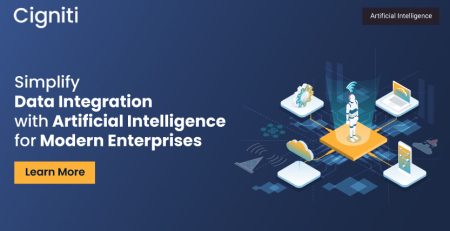Why CSOs Should Embrace The Power of AI-Based Self-Healing Test Automation
85% of enterprises will prioritize a cloud-first approach by 2025, propelling their digital transformation initiatives – Gartner
Businesses across industries are rapidly migrating to the cloud. This shift is crucial for fostering innovation, scaling efficiently, and responding to market demands with agility. Cloud adoption enhances performance and customer experiences, keeping companies competitive. However, despite these clear advantages, manual software testing can hinder digital acceleration.
Research shows that test automation can reduce costs by an average of 70-80% compared to manual testing. However, it is not without its limitations. Some are inherent to the system and need to be balanced with manual testing, while others arise from imprecise pre-programming, such as ineffective automation test hooks. Additionally, complex dynamic application designs can also pose challenges.
The Limitations of Traditional Test Automation
Traditional test automation tools rely heavily on object properties to identify elements within an application. When these applications undergo updates or modifications, the object properties often change, leading to test script failures. This necessitates significant effort to maintain and update these scripts, burdening test engineers with routine maintenance tasks instead of allowing them to focus on more valuable work.
Enter Self-Healing Test Automation
Self-healing test automation is an innovative approach designed to address the challenges posed by traditional test automation. In a conventional setup, script failures occur when user interface object properties change. Self-healing capabilities, however, enable testing tools to proactively sense these property changes and automatically adapt the scripts during runtime. This means that test scripts can “heal” themselves by detecting modifications in object properties and updating them with new attributes, ensuring continuous functionality despite evolving application interfaces.
The primary goal of self-healing is to minimize maintenance efforts, allowing test engineers to focus on higher-value tasks. By incorporating self-healing capabilities, organizations can enhance the efficiency, reliability, and scalability of their testing processes.
| According to the World Quality Report 2024, automation testing trends reveal that 77% of organizations are investing in AI to enhance and optimize their quality assurance processes. |
Advantages of Self-Healing Test Automation
Reduced Maintenance Effort: Self-healing test automation significantly transforms the maintenance aspect of testing. By autonomously adapting to software changes, it drastically reduces the time and effort required to update test scripts. This shift allows testing teams to concentrate on more strategic activities like test creation and planning, promoting overall efficiency and productivity.
Increased Test Breadth: With less time spent maintaining test scripts, testing teams can focus on designing and implementing more automated tests. This increases test coverage, offering a more thorough evaluation of the software. The result is the early detection and resolution of defects, ensuring a higher-quality product before it reaches production.
Enhanced Test Accuracy: Self-healing capabilities address the issue of false positives—test failures triggered by software modifications rather than genuine bugs. By automatically adjusting to these changes, the system ensures that tests only fail when encountering genuine defects. This heightened accuracy allows teams to concentrate on resolving authentic problems, improving overall software quality.
Accelerated Feedback Cycle: Self-healing test automation accelerates feedback. By minimizing test failures and delivering faster test results, developers can quickly identify and rectify issues within the development cycle. This accelerates the overall time to market, enabling faster delivery of high-quality software.
Cost Efficiency: While implementing self-healing test automation involves an upfront investment, the long-term financial benefits are substantial. The reduction in maintenance effort and time lowers operational costs. Increased test coverage and a faster feedback loop enhance efficiency, catching more defects early and reducing expensive late-stage fixes. These combined benefits lead to substantial cost savings over time.
Harnessing AI and ML: Integrating artificial intelligence (AI) and machine learning (ML) into self-healing test automation is transformative. These advanced technologies enable the system to learn from interactions, continuously improving its problem-solving capabilities. With each interaction and adaptation to software changes, the system becomes better at predicting and managing potential issues. This leads to high-quality software and a more resilient testing process.
How Self-Healing Works
Self-healing automation tools are sophisticated testing solutions that use advanced algorithms, often backed by AI and ML, to autonomously rectify issues that emerge during test execution. These tools are designed to adapt to software changes, reducing the manual effort required to maintain test scripts.
The process involves the following steps:
Detection: The self-healing system detects changes in the application’s object properties during runtime.
Adaptation: The system autonomously updates the test scripts with the new attributes, ensuring continuous functionality.
Execution: The updated test scripts run smoothly without any manual intervention.
Learning: The system learns from these interactions, continuously enhancing its ability to predict and adapt to future changes.
By incorporating self-healing capabilities, organizations can significantly improve the efficiency, reliability, and scalability of their testing processes, ultimately delivering high-quality software faster and more cost-effectively.
How Cigniti and Leapwork can help you stand out
Cigniti is a Gold partner of Leapwork, a robust and intuitive no-code test automation platform. Cigniti has an aligned strategic partnership to co-create robust, intuitive, automated testing solutions across domains and technologies. Our certified testing experts are trained in the Leapwork suite and have significant expertise in providing services around the Leapwork platform.
Leapwork enables automated test cases to be designed and built using the universally understood language of flowcharts rather than scripts. This means users don’t require programming skills to implement or maintain cases, reducing developer dependency and helping achieve rapid automation coverage.
Conclusion
The software development landscape is constantly evolving, demanding more efficient, reliable, and scalable testing processes than ever before. Self-healing test automation emerges as a pivotal advancement in overcoming the limitations of traditional automation methods. By autonomously adjusting to software changes, self-healing capabilities diminish maintenance efforts, enhance test coverage, improve accuracy, and expedite the feedback loop. These systems, powered by AI and ML, continuously learn and refine themselves, ensuring not only high-quality software but also a robust testing process. Understanding when to implement self-healing test automation is crucial for maximizing its benefits.
Ready to revolutionize your software testing approach? Embrace self-healing test automation and unlock the full potential of your QA processes. Download our detailed joint white paper to dive deeper into the benefits, challenges, and implementation strategies of AI-driven test automation. Transform your testing today for a faster, flawless tomorrow.





Leave a Reply